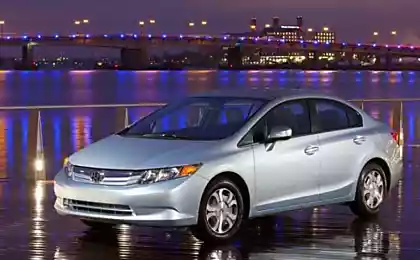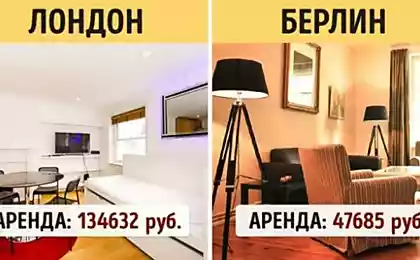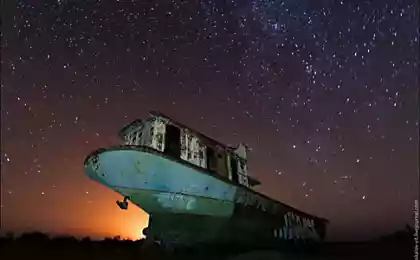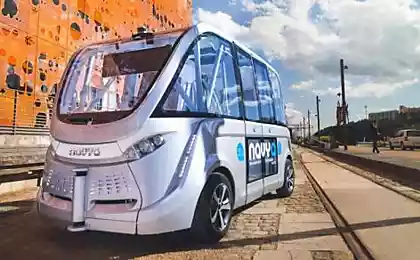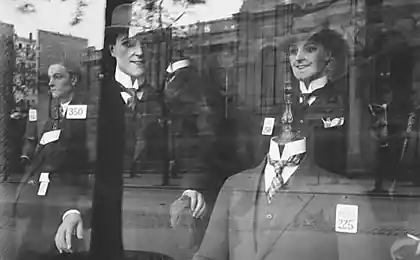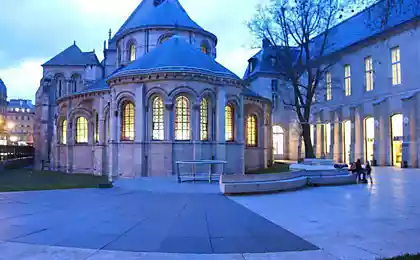1070
Transport of the recent past
The first form of public transport in Minsk appeared in 1892. However, grandfathers and their fathers are unlikely to talk about how to work in the Minsk tram Zakharyevskaya Street (now pr. Of Independence). In our memory remained LASIK, and other ZiU invention Soviet automobile industry as transportation of our childhood. They were convenient to look through the clear glass of the work of the driver, hang on the handrails and bask in the motor winter morning on the way to school in the first shift. Try to remember those machines, the latest of which were written off five years ago.
26 photos.

02

03

04

LAZ-695
Buses from Ukrainian Lviv appeared on the streets of the Belarusian capital in the 60's. It was said that the design of this machine, so to speak, borrowed from the German Magirus. According to the tradition of the Soviet era, all machines were replaced by domestic. Buses have a small capacity, stuffy salons and narrow doors, but in great demand as the best means of transportation in the city. In Minsk, in the mid-80s the older models (glazed roof slopes and the air intakes in the form scheley- "gills" on the side) have not yet rot, as we have already arrived, new, with a firm peak. It is noteworthy that the original diesel engine Ukrainians consider inappropriate for the city bus. Going against the opinion of the rest of the world, they found petrol unit in the rear of the machine.

06

It is the "gallery" interior flocked cold winters most shivering passengers. Stretch in the rear seats that resemble sofas, considered pioneers of the time a special privilege. None of rebyatni guessed that comfortable warmth - one of the main problems of the model. Because of frequent engine overheating has failed more than one machine. Old Laz accelerate to 70 km / h and consume 35-40 liters of fuel per 100 kilometers. Despite its small size, the bus had 33 seats and placed 55 passengers. During the morning rush hour, Soviet workers argued that the technical data provided with considerable understatement.
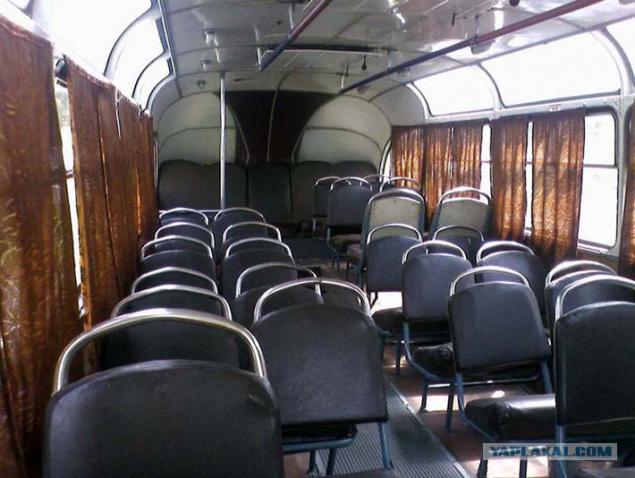
08
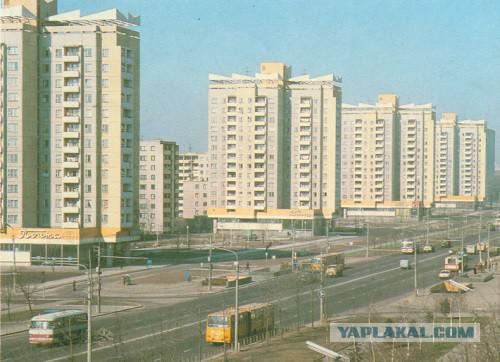
Over time, Laz sent unpopular routes. But in the beginning not the richest 90 Minsk returned to the budget "humpbacked" cars from the city. The last delivery of these buses were in 1992-1993. We returned to our capital manholes were power steering and dual main transfer (without gear wheel). However, work on city routes models've long. Minsk residents became more uncomfortable small buses could not cope with the load, planting too slow - two people could hardly enter at the same time. More modern cars drove them first to the secondary, and after all for suburban "cottages" routes. In July 2007, in honor of the 940th anniversary of Minsk were solemnly announced that LAZ-695 removed from all regular municipal public transport routes. They were replaced by native copies issued MAZ.
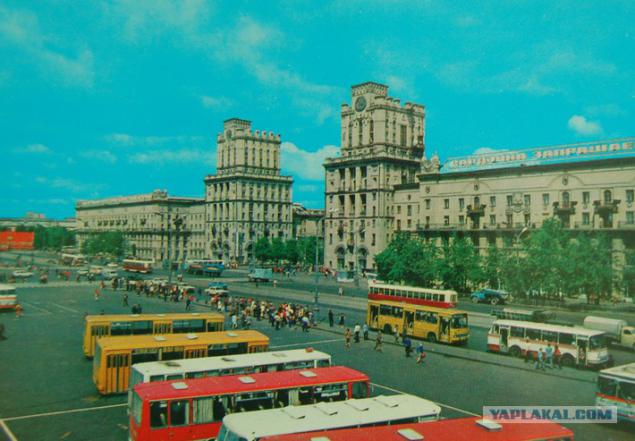
Trolleybus ZiU
Along the main avenue of the city, surviving as renaming and called Minsk dwellers simply Prospectus, once drove trolley - №1 and №2. They were ZiU. Let them in the city of Engels on the Order of the Red Banner Trolleybus Plant Uritsky. Fortunately, the initial letters of the abbreviation includes only the last three words. The model has become legendary at least because in the 90 post-Soviet states have become new issue their own trolley - "clones" of old ZiU. Originals is different from the more ancient copies of the air intake grille behind the windshield and windows with vents located along the right side. Inside, along the left side was installed only one row of seats - at the expense of this was more standing places.

11

Machine is equipped with a motor-generator to convert the input DC voltage of 550 V. It rotates coaxially DC generator for office 24 V. Because of this decision was heard constant noise from the motor-generator running. As a result of the approaching trolley worn attracted the attention of careless passengers from afar. Interestingly, the Power 550-volt circuits and components originally housed under the floor. But because of the low electrical engineers still moved equipment on the roof trolley, as well as in a cabinet behind the driver's seat. However, on city streets and drove the model with a transparent window behind the driver. Usually at the front door flocked students who watched through the glass of the sacrament of control.

13

In 1994 appeared the Belarusian version of Engels Trolleybus: ACSM-101 and "ZiU-Belkommunmash." The capital's transport experts quickly found a simple way to distinguish the car from the Belarusian Russian: if lights are located on the "chest" trolley - it ZiU, and if mounted in the bumper - it ACSM. Over 90 our city continues to purchase improved versions ZiU-9, but domestic "Belkommunmash" with their ACSM gradually supplanted the "oldies" from Minsk streets. Helped him and MAZ models 103T - "clone" of the bus, but with "horns".

15
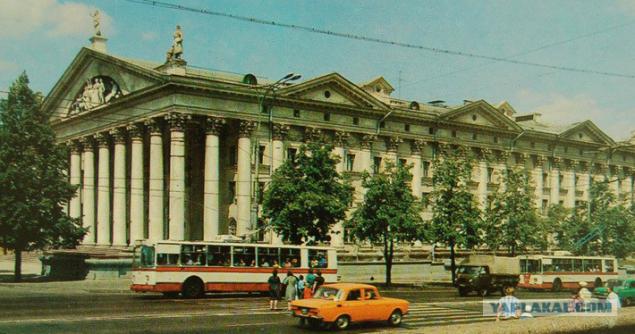
16

Bus "Ikarus»
200th (260th and 280th articulated) "Icarus" - an epoch in the history of not only Soviet, but also the world of the bus. The first copies appeared in Minsk in 1973. The engine was located in the middle of them wheelbase, which is why it was impossible to make a low floor. But capacity has been significantly increased - in the car could go up to 160 people. Produce buses in Hungary until 2003. Unlike man-holes, "Ikarus" many memorable cold. In Russia, for example, they got the nickname "BMRT" ("large freezer trawler"), due to severe icing in winter cabin. A 280-th model became known as the "accordion" because of the association, which causes the joint of the bus. Another nickname - "sausage" - the car was unusual for those times length.

18

19
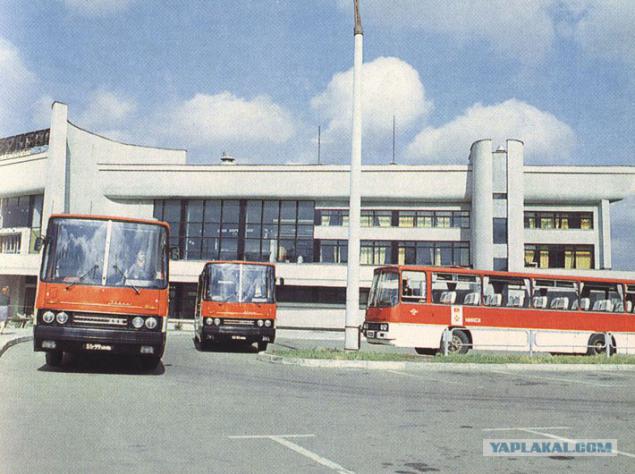
Buses, comes in different countries of the socialist camp, the factory had a different color: the USSR - bright yellow and later white, Poland, Czechoslovakia and Bulgaria - red, Hungary - blue with gray doors and roof. Design solution 200's no different delights: even a box, no signs of aerodynamics. The basic rate was made exactly on the passenger: tilt-sliding doors, wide passage, soft and comfortable seats, wide-opening large windows and of course, plenty of space in the cabin. Appearance, however, was so memorable that these buses confused with other impossible.

21

Machines equipped with 180-horsepower engine and manual transmission. The latter were less comfortable for drivers than automatic, but turned out to be incredibly reliable and durable. However, such a pleasure had to pay in 90 independent Belarus felt expensive and, as a result - a deficit of spare parts. Even before the middle of the last decade of the XX century Minsk bought used "Ikarus-260" and "Ikarus-280", spent his life or replaced by more modern from Germany, Poland and other European countries. Time-worn "dvuhsotki" successfully proven in our streets their survivability and reliability. Abandon them did not want to. Gomel established production to overhaul "Icarus", "Amkodor" tried to make a joint Belarusian-Hungarian enterprise, but it did not last long. On city routes began to appear MAZ, the original cost of which was "space" 200 thousand dollars. Over time, foreign domestic components replaced, reducing that amount by 60 percent last year, the use of "bellows" in the capital is considered to be the same all the 2007-th.
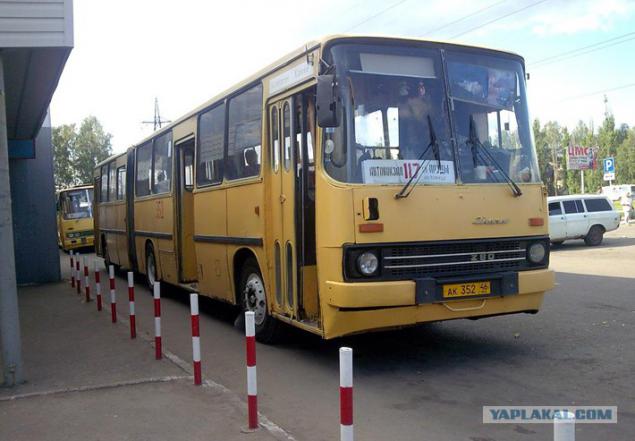
26 photos.

02

03

04

LAZ-695
Buses from Ukrainian Lviv appeared on the streets of the Belarusian capital in the 60's. It was said that the design of this machine, so to speak, borrowed from the German Magirus. According to the tradition of the Soviet era, all machines were replaced by domestic. Buses have a small capacity, stuffy salons and narrow doors, but in great demand as the best means of transportation in the city. In Minsk, in the mid-80s the older models (glazed roof slopes and the air intakes in the form scheley- "gills" on the side) have not yet rot, as we have already arrived, new, with a firm peak. It is noteworthy that the original diesel engine Ukrainians consider inappropriate for the city bus. Going against the opinion of the rest of the world, they found petrol unit in the rear of the machine.

06

It is the "gallery" interior flocked cold winters most shivering passengers. Stretch in the rear seats that resemble sofas, considered pioneers of the time a special privilege. None of rebyatni guessed that comfortable warmth - one of the main problems of the model. Because of frequent engine overheating has failed more than one machine. Old Laz accelerate to 70 km / h and consume 35-40 liters of fuel per 100 kilometers. Despite its small size, the bus had 33 seats and placed 55 passengers. During the morning rush hour, Soviet workers argued that the technical data provided with considerable understatement.

08

Over time, Laz sent unpopular routes. But in the beginning not the richest 90 Minsk returned to the budget "humpbacked" cars from the city. The last delivery of these buses were in 1992-1993. We returned to our capital manholes were power steering and dual main transfer (without gear wheel). However, work on city routes models've long. Minsk residents became more uncomfortable small buses could not cope with the load, planting too slow - two people could hardly enter at the same time. More modern cars drove them first to the secondary, and after all for suburban "cottages" routes. In July 2007, in honor of the 940th anniversary of Minsk were solemnly announced that LAZ-695 removed from all regular municipal public transport routes. They were replaced by native copies issued MAZ.

Trolleybus ZiU
Along the main avenue of the city, surviving as renaming and called Minsk dwellers simply Prospectus, once drove trolley - №1 and №2. They were ZiU. Let them in the city of Engels on the Order of the Red Banner Trolleybus Plant Uritsky. Fortunately, the initial letters of the abbreviation includes only the last three words. The model has become legendary at least because in the 90 post-Soviet states have become new issue their own trolley - "clones" of old ZiU. Originals is different from the more ancient copies of the air intake grille behind the windshield and windows with vents located along the right side. Inside, along the left side was installed only one row of seats - at the expense of this was more standing places.

11

Machine is equipped with a motor-generator to convert the input DC voltage of 550 V. It rotates coaxially DC generator for office 24 V. Because of this decision was heard constant noise from the motor-generator running. As a result of the approaching trolley worn attracted the attention of careless passengers from afar. Interestingly, the Power 550-volt circuits and components originally housed under the floor. But because of the low electrical engineers still moved equipment on the roof trolley, as well as in a cabinet behind the driver's seat. However, on city streets and drove the model with a transparent window behind the driver. Usually at the front door flocked students who watched through the glass of the sacrament of control.

13

In 1994 appeared the Belarusian version of Engels Trolleybus: ACSM-101 and "ZiU-Belkommunmash." The capital's transport experts quickly found a simple way to distinguish the car from the Belarusian Russian: if lights are located on the "chest" trolley - it ZiU, and if mounted in the bumper - it ACSM. Over 90 our city continues to purchase improved versions ZiU-9, but domestic "Belkommunmash" with their ACSM gradually supplanted the "oldies" from Minsk streets. Helped him and MAZ models 103T - "clone" of the bus, but with "horns".

15

16

Bus "Ikarus»
200th (260th and 280th articulated) "Icarus" - an epoch in the history of not only Soviet, but also the world of the bus. The first copies appeared in Minsk in 1973. The engine was located in the middle of them wheelbase, which is why it was impossible to make a low floor. But capacity has been significantly increased - in the car could go up to 160 people. Produce buses in Hungary until 2003. Unlike man-holes, "Ikarus" many memorable cold. In Russia, for example, they got the nickname "BMRT" ("large freezer trawler"), due to severe icing in winter cabin. A 280-th model became known as the "accordion" because of the association, which causes the joint of the bus. Another nickname - "sausage" - the car was unusual for those times length.

18

19

Buses, comes in different countries of the socialist camp, the factory had a different color: the USSR - bright yellow and later white, Poland, Czechoslovakia and Bulgaria - red, Hungary - blue with gray doors and roof. Design solution 200's no different delights: even a box, no signs of aerodynamics. The basic rate was made exactly on the passenger: tilt-sliding doors, wide passage, soft and comfortable seats, wide-opening large windows and of course, plenty of space in the cabin. Appearance, however, was so memorable that these buses confused with other impossible.

21

Machines equipped with 180-horsepower engine and manual transmission. The latter were less comfortable for drivers than automatic, but turned out to be incredibly reliable and durable. However, such a pleasure had to pay in 90 independent Belarus felt expensive and, as a result - a deficit of spare parts. Even before the middle of the last decade of the XX century Minsk bought used "Ikarus-260" and "Ikarus-280", spent his life or replaced by more modern from Germany, Poland and other European countries. Time-worn "dvuhsotki" successfully proven in our streets their survivability and reliability. Abandon them did not want to. Gomel established production to overhaul "Icarus", "Amkodor" tried to make a joint Belarusian-Hungarian enterprise, but it did not last long. On city routes began to appear MAZ, the original cost of which was "space" 200 thousand dollars. Over time, foreign domestic components replaced, reducing that amount by 60 percent last year, the use of "bellows" in the capital is considered to be the same all the 2007-th.



